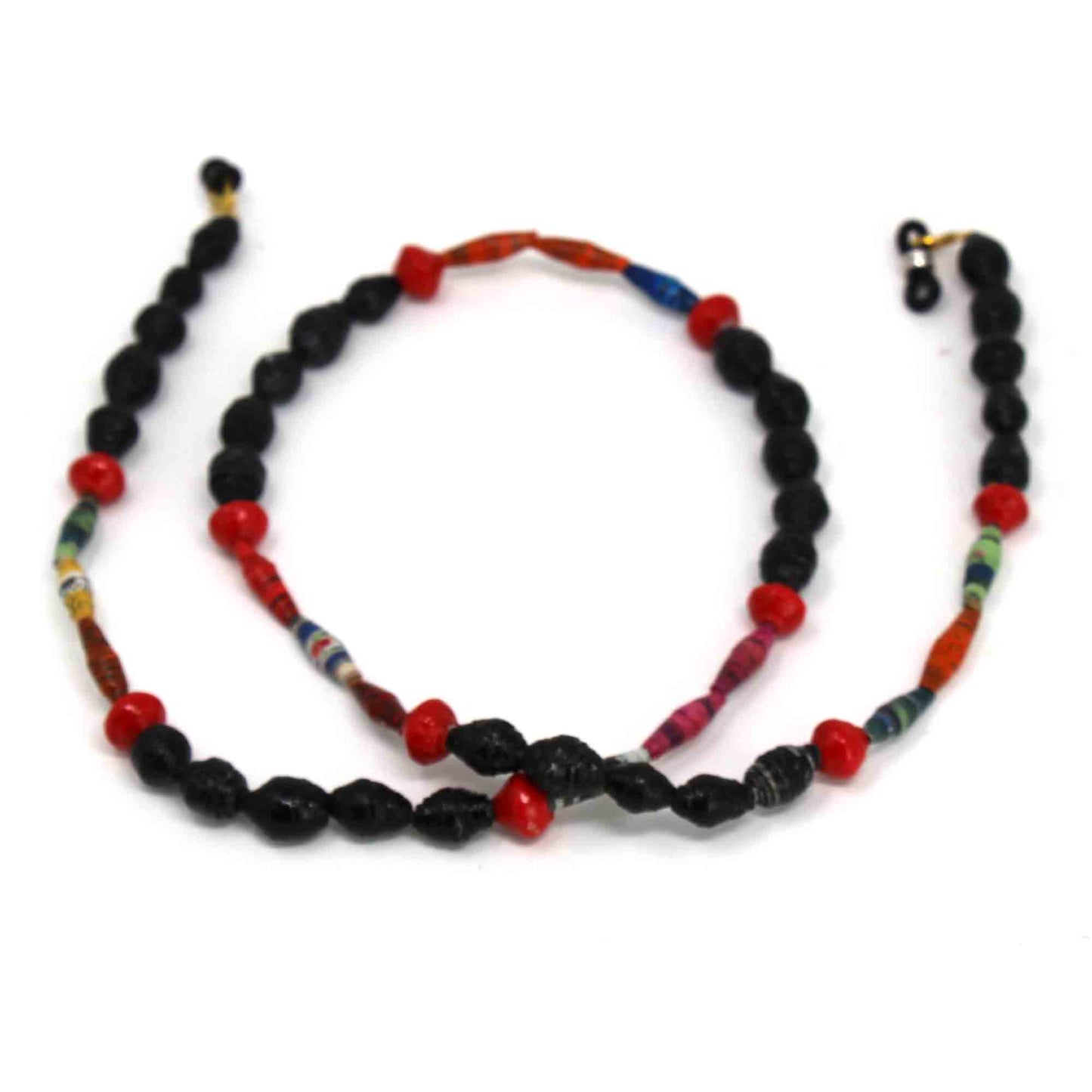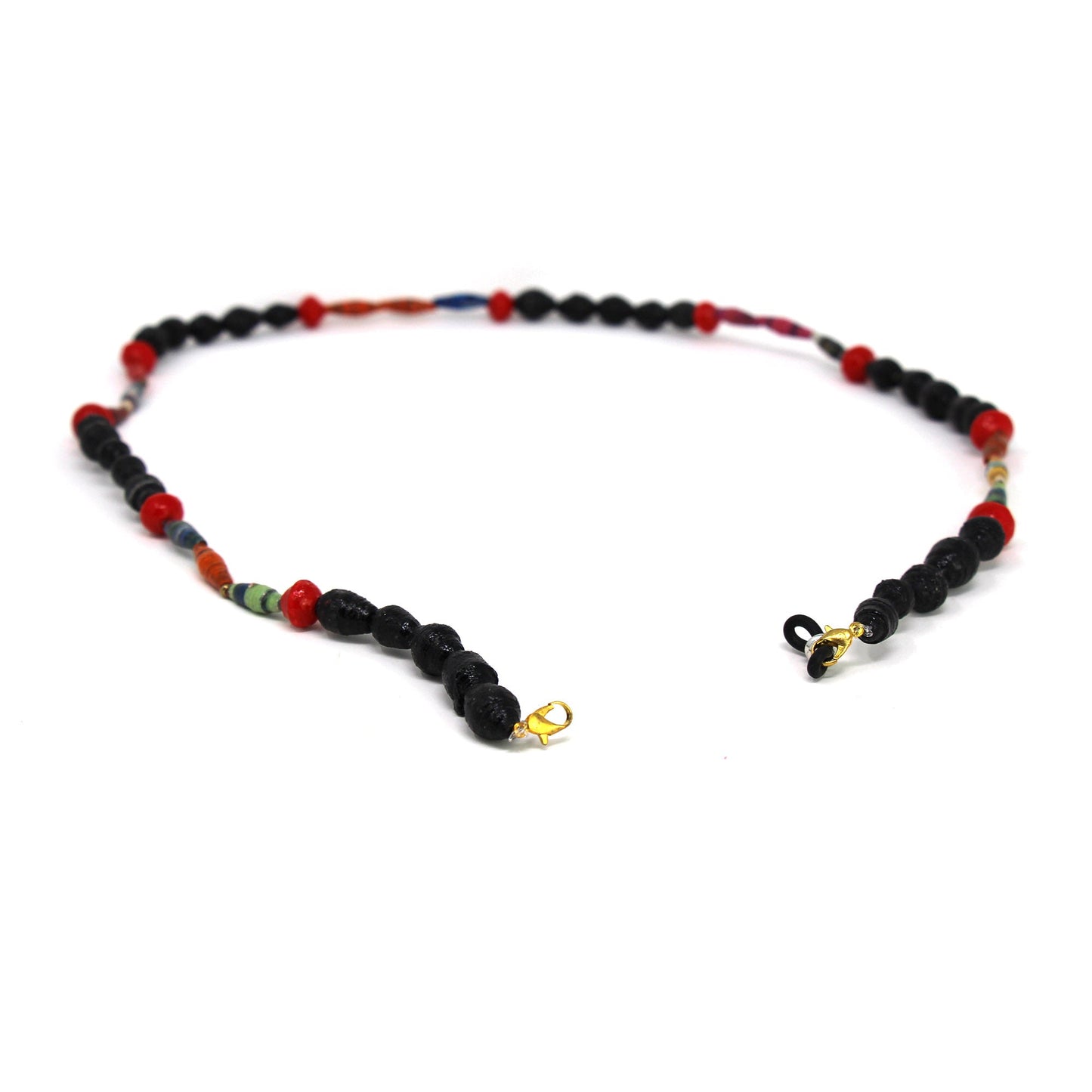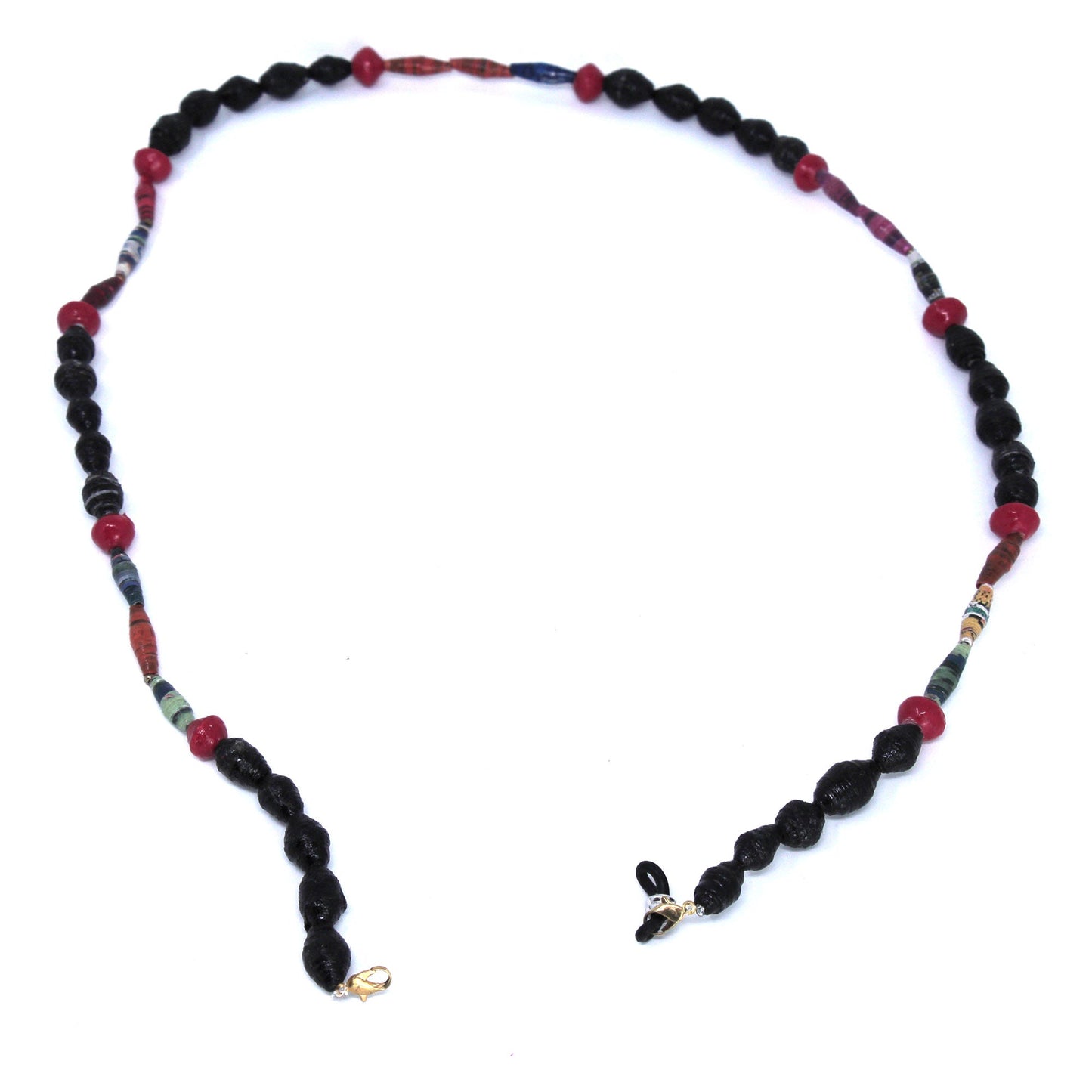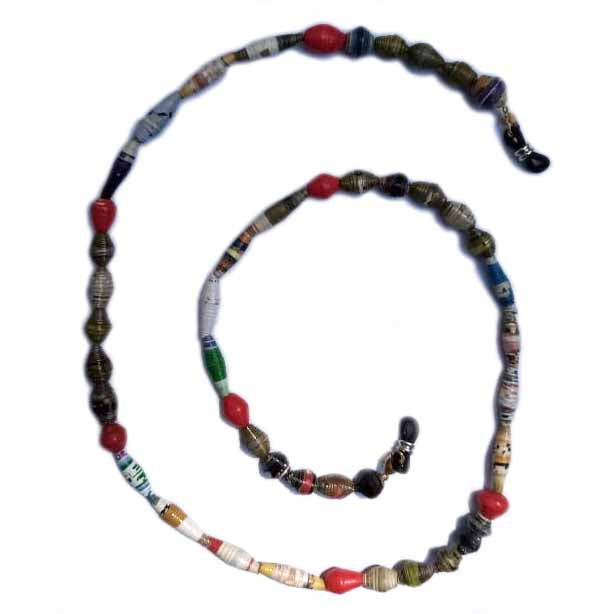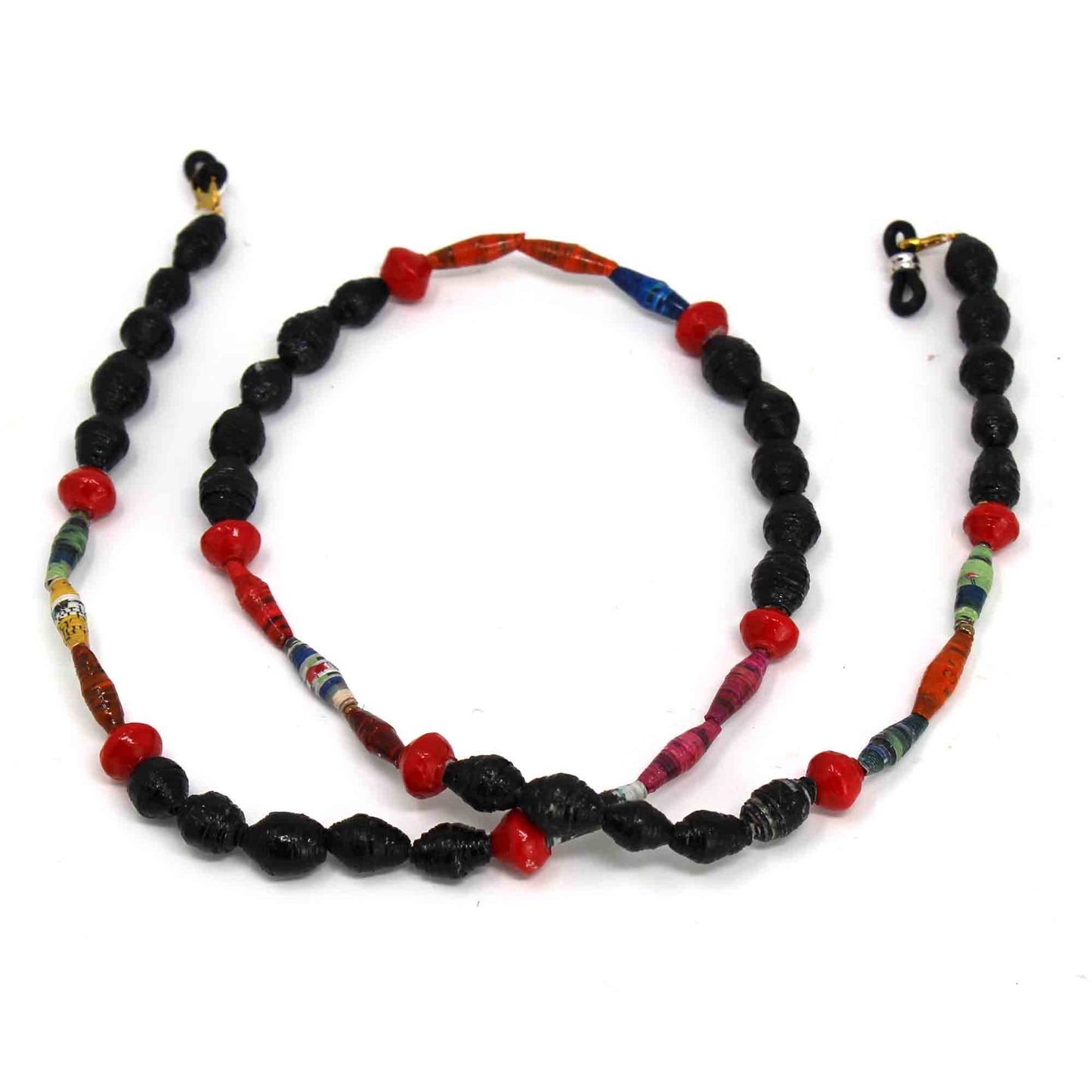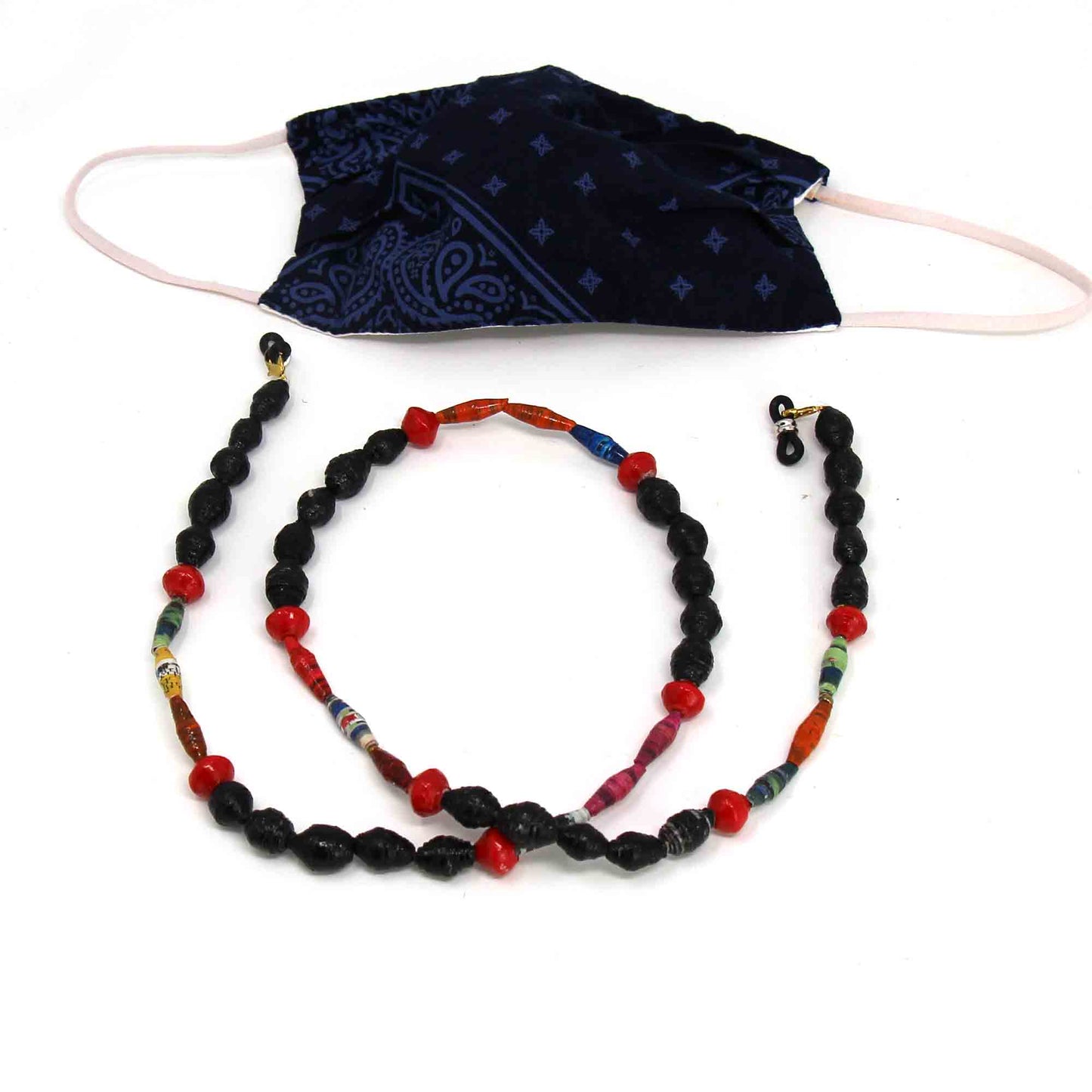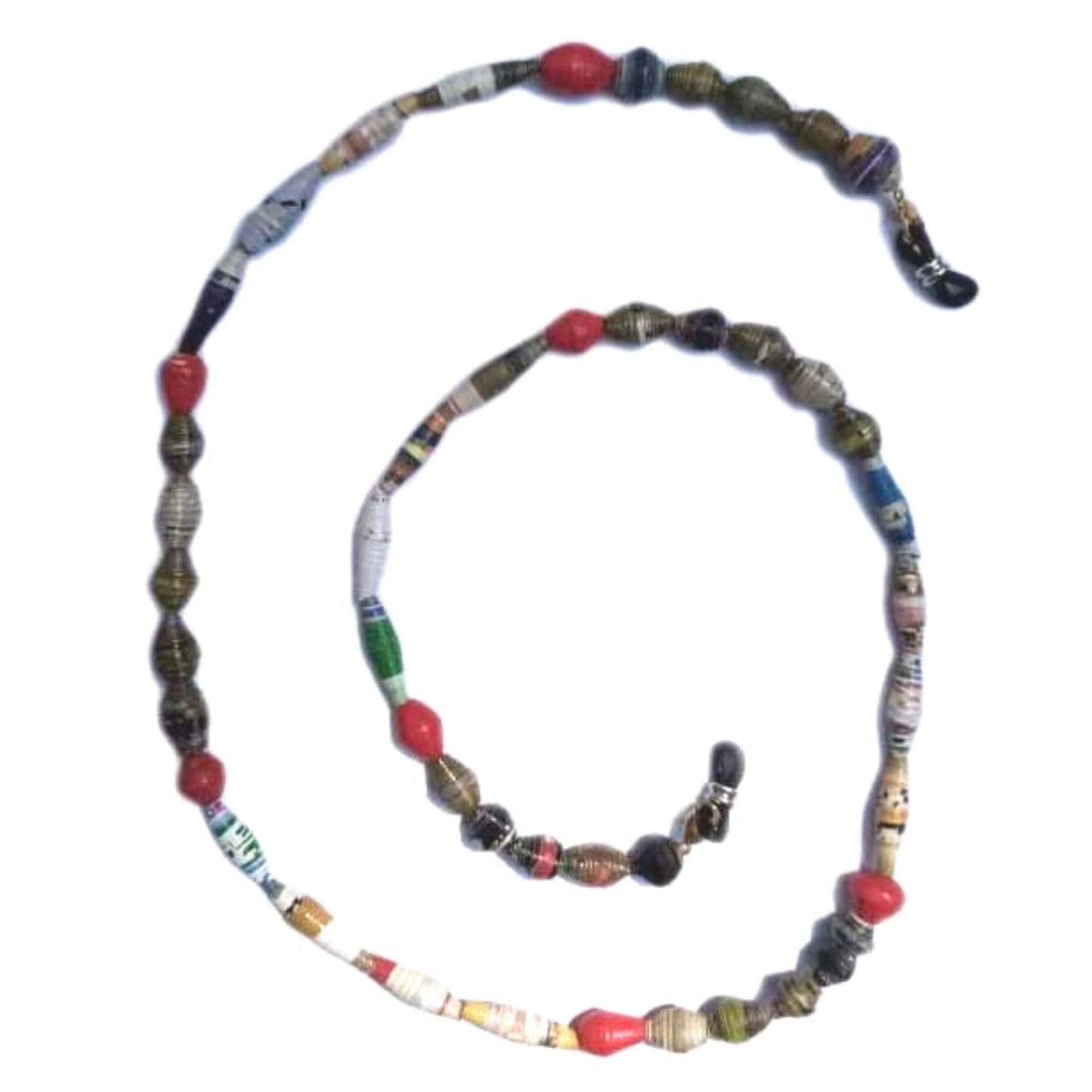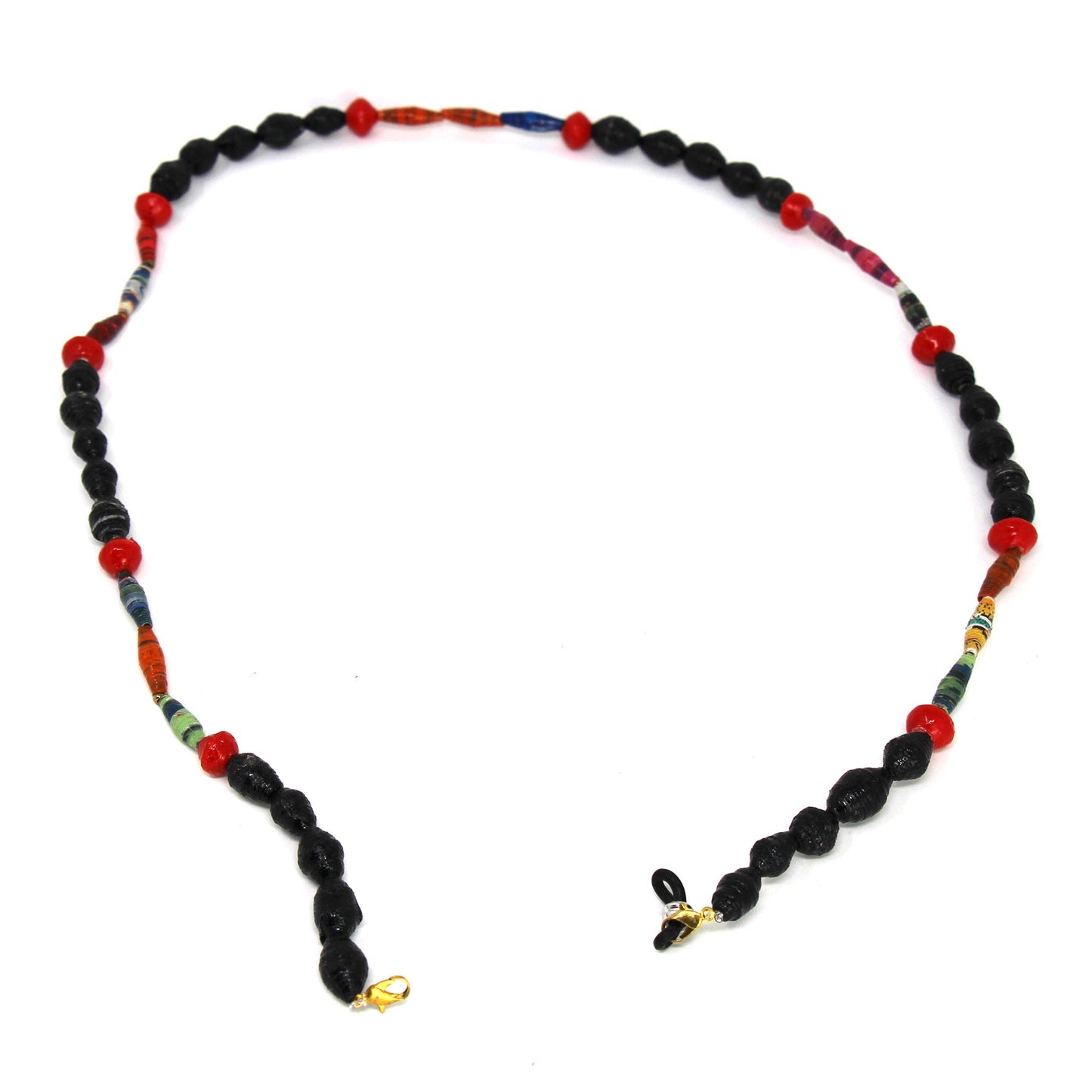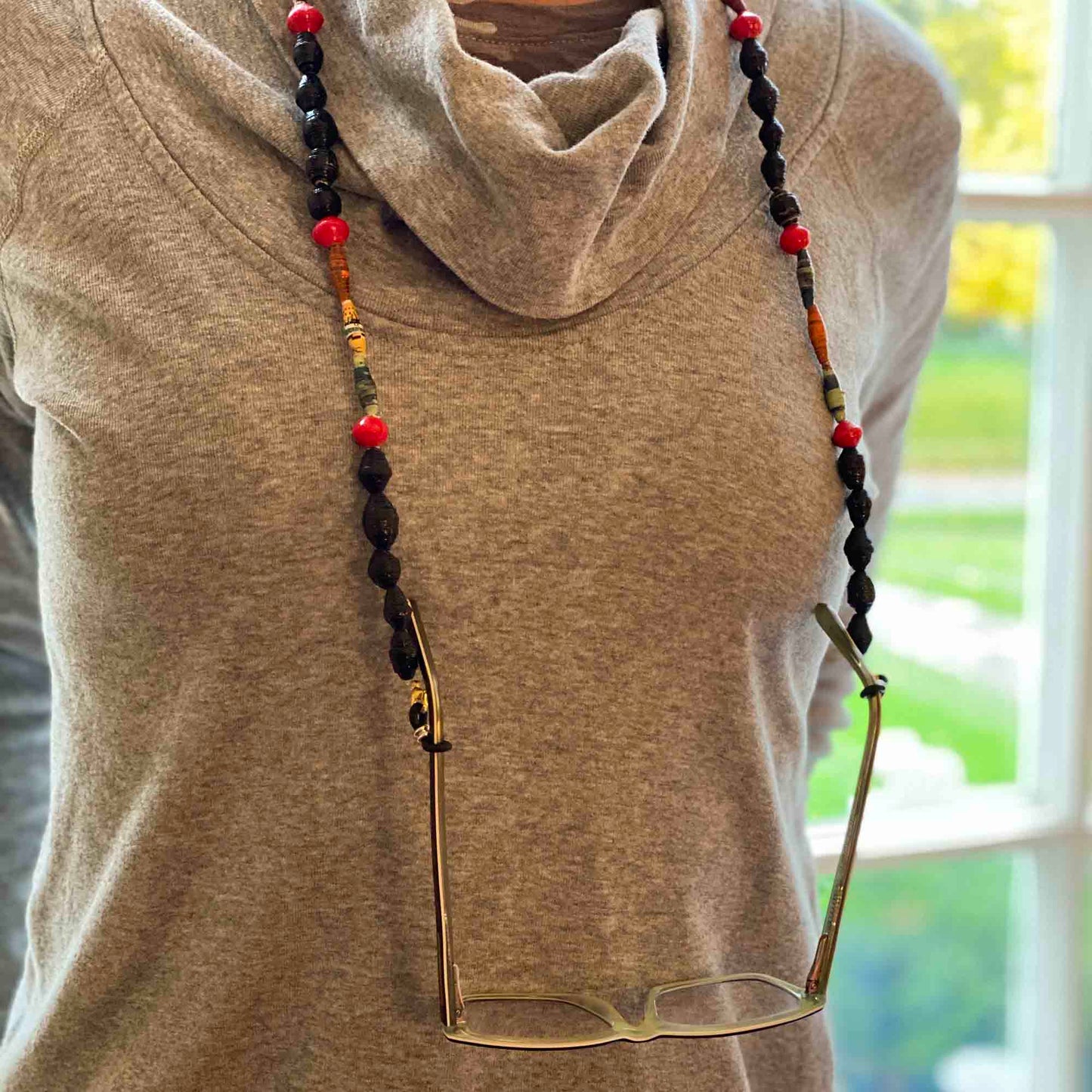Global Crafts
Face Mask/Eyeglass Paper Bead Chain, Black and Red
Face Mask/Eyeglass Paper Bead Chain, Black and Red
Couldn't load pickup availability
Add a next-level vibe to your face mask or eyeglasses with this stylish chain clasp made from recycled paper beads! Apart from being another pretty accessory, they help keep your face masks on at all times - while solving the ear-dangle or chin-strap situation when temporarily pulling off your mask. A colorful way to jazz up your socially responsible style!
- Paper bead chain measures approximately 33-inches (84 cm) in length
- Brass lobster clasp 1/2 inch (1.2 cm) for securing mask ends and rubber stays to attach to eye glass arms.
- Made from recycled paper beads. Colors will vary, but will be in the color family listed in title.
- MASK NOT INCLUDED
The Story Behind the Art:
These unique paper beads are made in Kisumu, Kenya by talented artisans who upcycle discarded magazines and papers, transforming them into functional and stylish jewelry and accessories. The papers are torn and then rolled to form the beads. Once complete, the paper beads are sealed in many coats of glossy, water-based varnish. Because of the wide variety of recycled paper goods used, the handmade beads can come in all sizes, shapes, colors and patterns - truly speaking to the one-of-a-kind nature of each piece.
Share
About the Artisans
About the Artisans
 Joyeria Semilla meaning Seed Jewelry is a small fair-trade workshop in the Andean town of Villa de Leyva, Colombia. Girasol Taborda, a local artisan and social entrepreneur, started the workshop in the mid-1990s.
Joyeria Semilla meaning Seed Jewelry is a small fair-trade workshop in the Andean town of Villa de Leyva, Colombia. Girasol Taborda, a local artisan and social entrepreneur, started the workshop in the mid-1990s.
Joyeria Semilla’s objective is three-folds; to create new jobs, revive Colombia's handicrafts sector and to motivate locals to better manage their natural resources. The organization works primarily with socially and economically disadvantaged youths, single mothers and people with disabilities in the area. The company offers free training in product design, technical training and marketing to new members. Joyeria Semilla has trained them in the craft of jewelry-making.

Caña Flecha or “Gynerium Sagittatum” is a locally found palm tree in the regions of the Caribbean coast. The leaves from this plant are used for making jewelry, woven hats, bags and baskets. The Zenú Indians were and their descendants inherited the tradition of picking veins of the green palm leaf for weaving. These veins were made into woven hats and other products for their personal use.
The Zenú culture is said to have existed between 200BC to1600AD. With the arrival of the colonizers in the 16th century, the indigenous community declined of unknown reasons. Today a very small population remains that claims the inheritance of the almost extinct Zenú tribe. Known for their skills in the construction of major waterworks, canals and irrigation system along with being skilled goldsmiths, examples of their accomplished craftsmanship are found in various museums around the world. Their larger means of subsistence were hunting, farming, fishing and trading.
Caña Flecha is found in abundance in the region, and hence makes for a sustainable and naturally available raw material for these products. Every bit of the plant is utilized – from using in building walls and roofs in houses to food for cattle and medicinal purposes. It is from the central vein of the leaf that the fibers for weaving are obtained. After the hard surface is peeled off, the fibers are left in the sun to dry and undergo a natural tinting process; these fibers are barely about 1 millimeter in thickness and hence call for a lot of skill and patience to weave with. The dried fibers are then processed for natural coloration - some are boiled with lemon to whiten them and some are treated with mud and boiled with plantain leaves to blacken them. The designs are based on ancient motifs and mathematical representations, which are inspired by the early Zenú culture.
